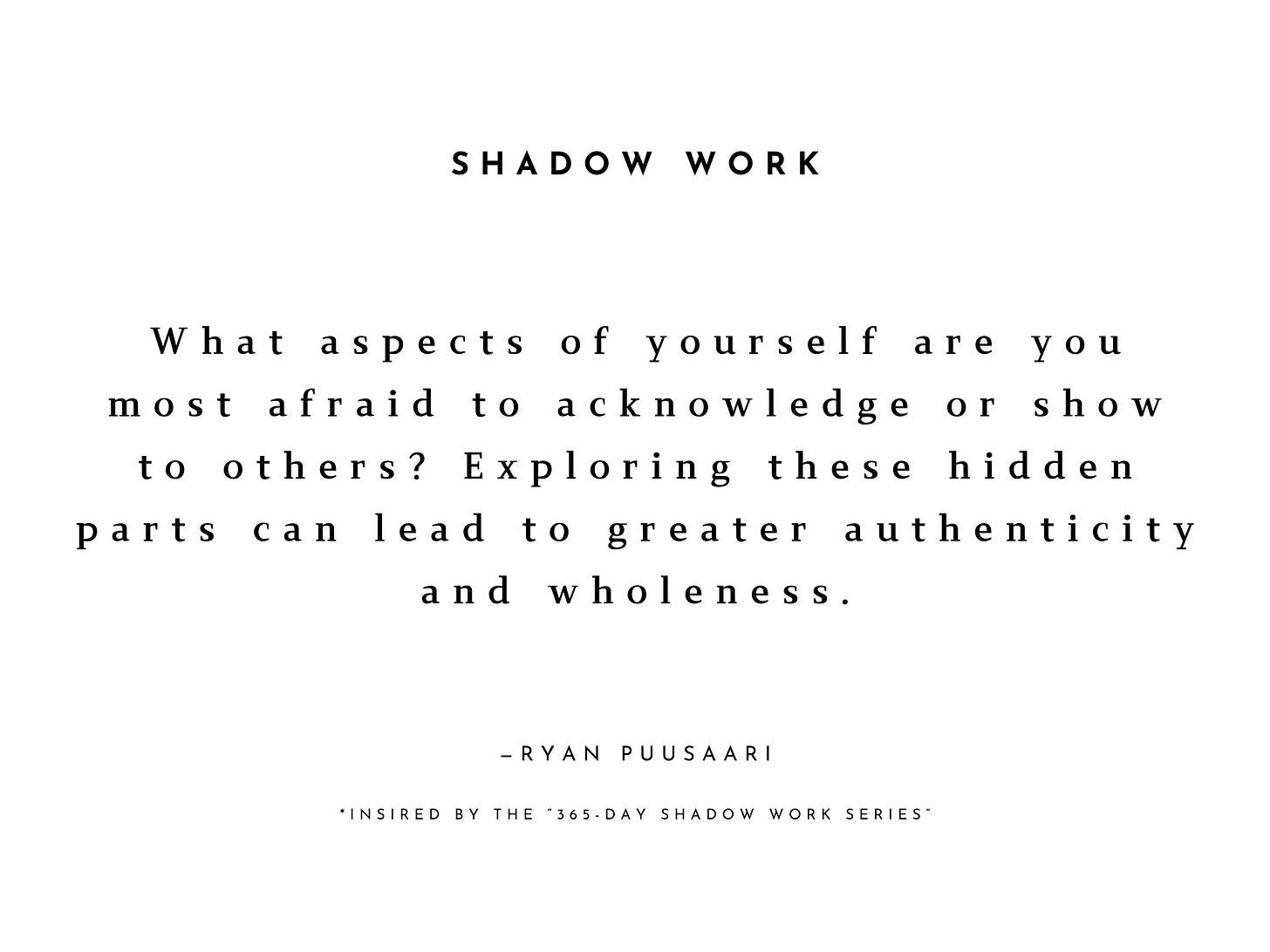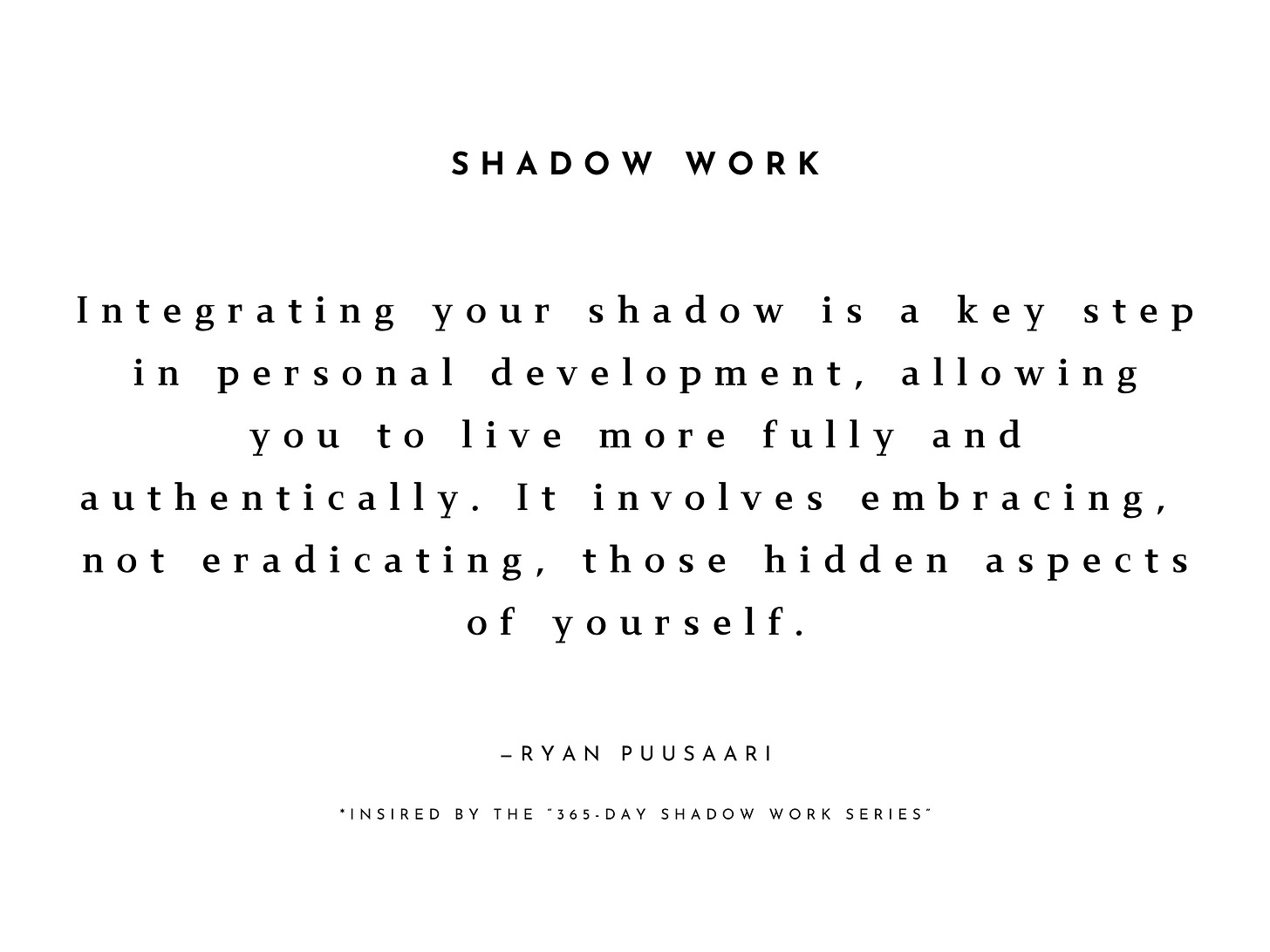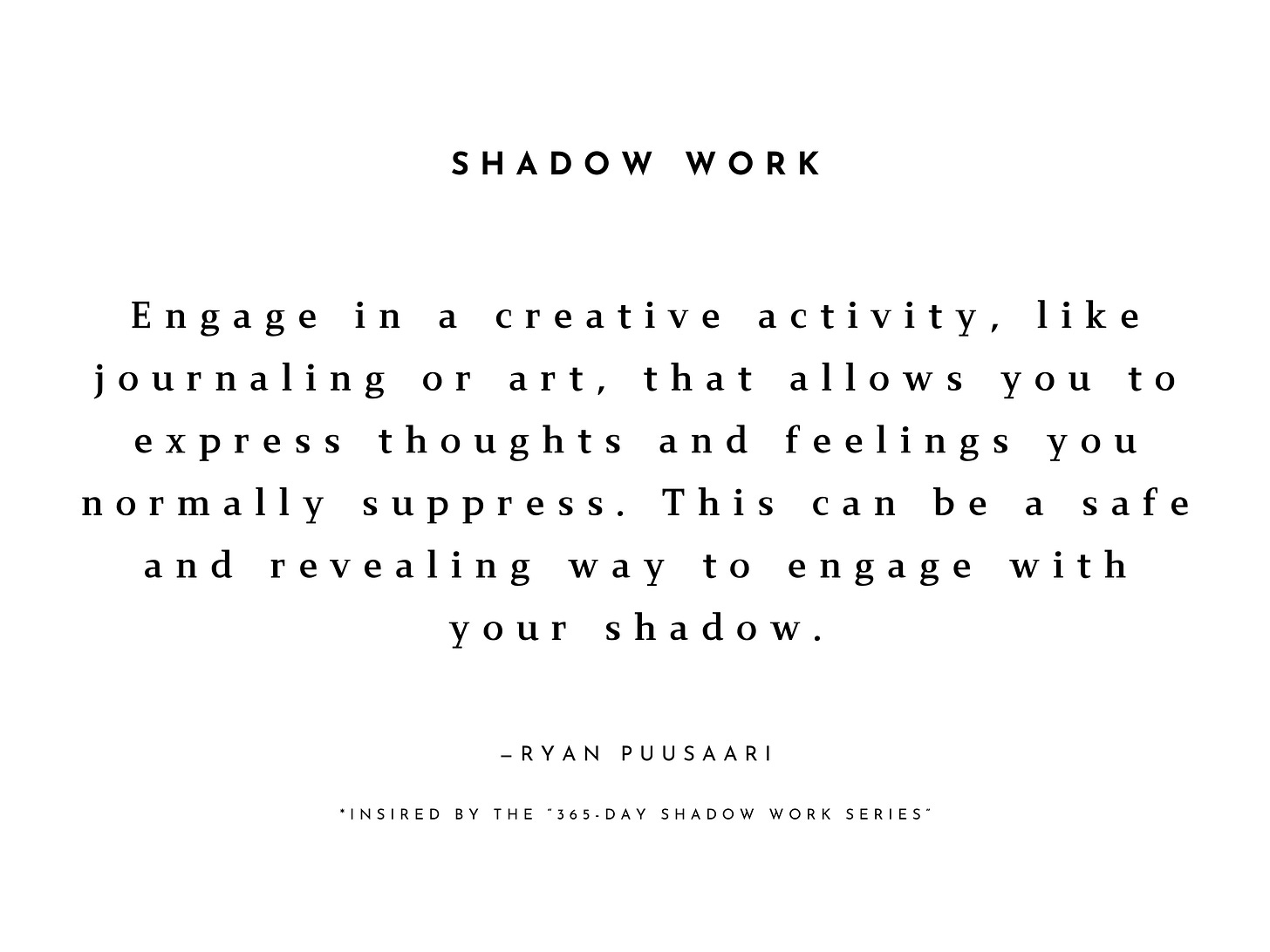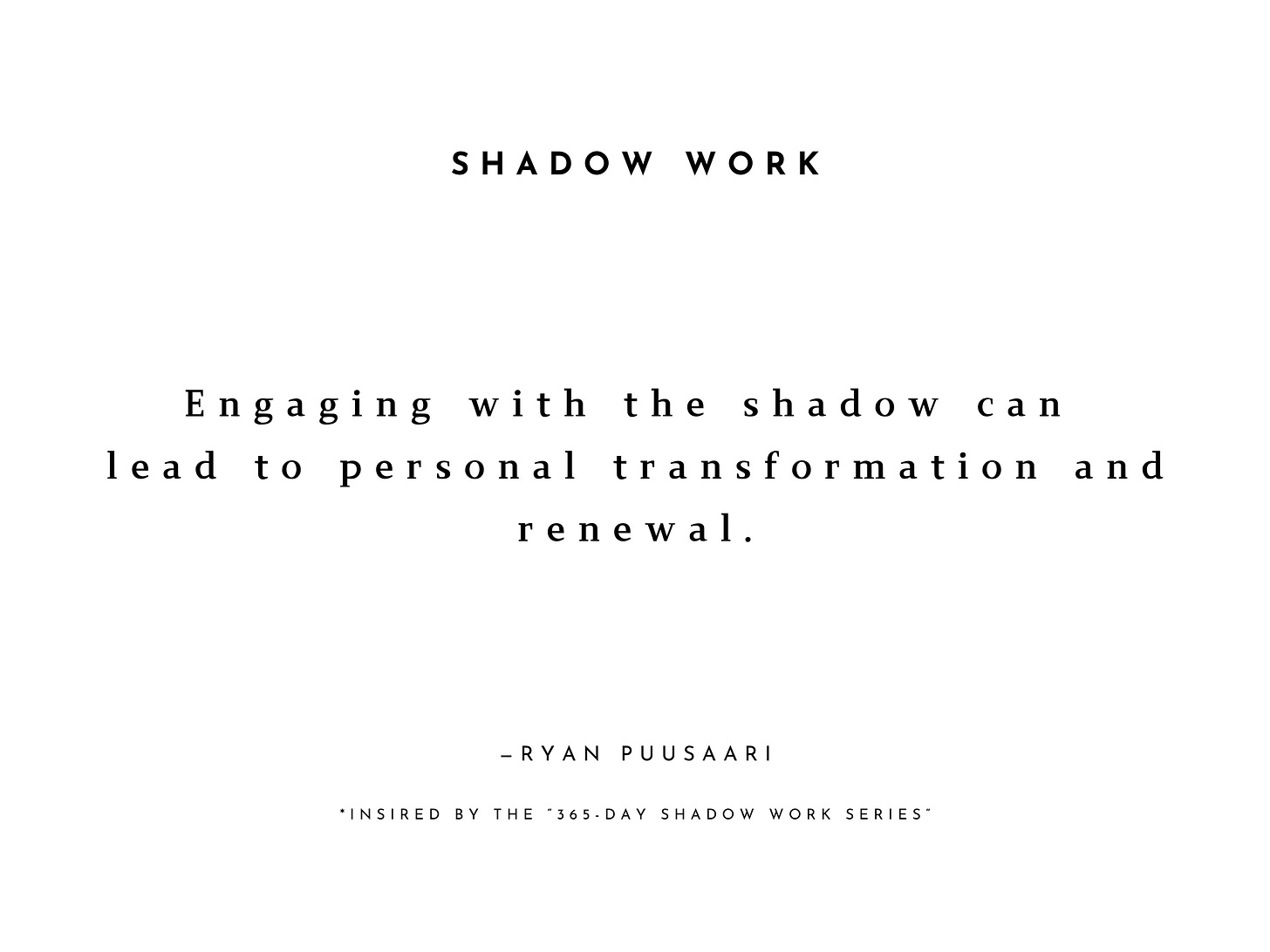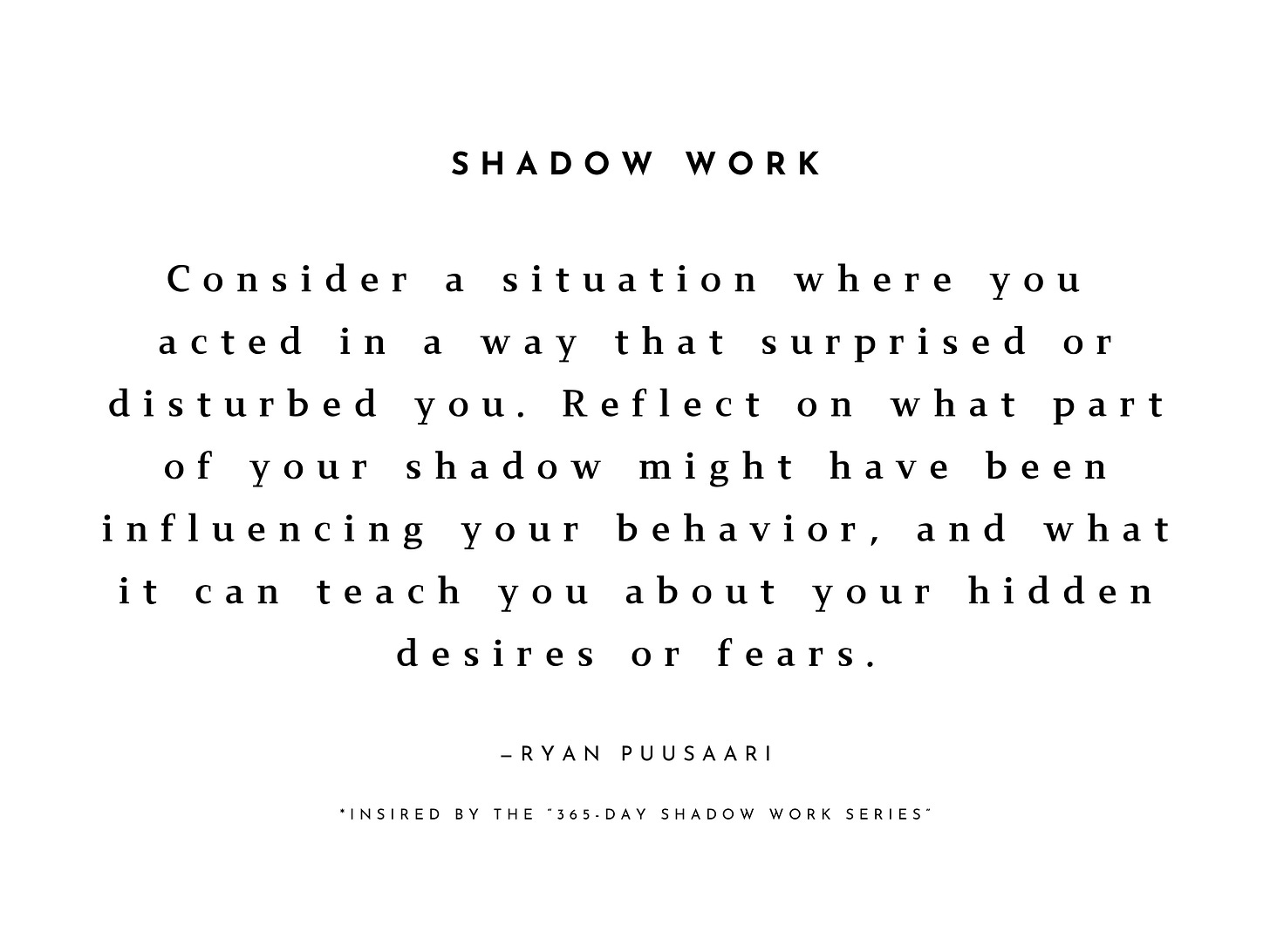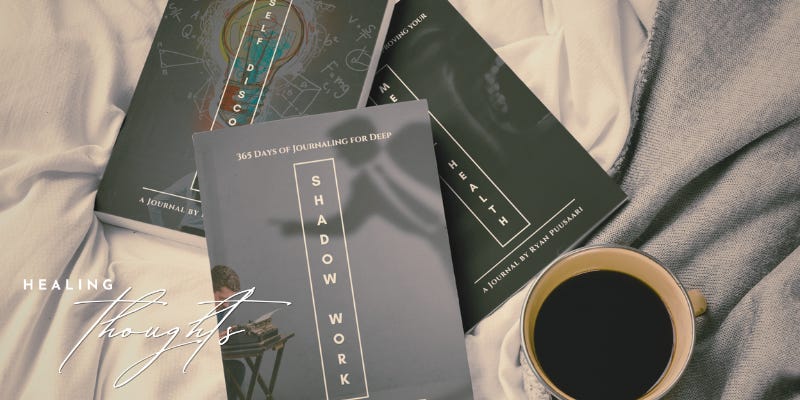
finding freedom in hidden desires
The real freedom comes not from hiding your flaws but from letting them breathe.
NOTE: This is the 2nd edition of the Dark Matter series. To view the full series please visit the archives. Make sure you never miss an issue, hit the subscribe button below.
We’ve all got parts of ourselves tucked away—desires, urges, feelings that don’t see the light. Stuff we shove down, hoping it stays buried.
Why?
Because it’s messy.
It doesn’t fit the image we’re trying to project. Too raw, too risky, too much. So we lock it up, slap on a mask, and pretend it’s not there. But the thing is, that trick never works for long. The more we push those pieces aside, the more tension builds inside.
It’s like living two lives—one for show, the other humming quietly beneath it all.
And that split wears you down.
Real growth only happens when you stop running from what’s uncomfortable. When you look those hidden parts in the eye, stop judging, and learn to sit with them. That’s when things shift. You start peeling off the layers, finding space to just be—without the performance.
This isn’t about becoming someone new.
It’s about making peace with everything you already are.
The stuff you’re scared to admit…
Yeah, that’s the real you peeking out—the parts you’ve stamped down, labeled as “too much” or “not enough.” Anger, shame, jealousy. Dreams you ditched because they didn’t fit the mold. Even tenderness, insecurity, or those weird urges you don’t talk about.
All of it shoved into the background, out of sight.
Why?
Because you figured if others saw it, they wouldn’t approve. So you hide. You split yourself in two—the version you let people see, and the one you keep locked away.
But that division is a slow burn. It wears you out. Living like that feels like holding your breath all the time. Sooner or later, you’ve got to let it out.
Facing those messy bits is tough, no doubt. But avoiding them keeps you tangled in pretense. You can’t be free when you’re running from yourself.
This isn’t about fixing anything.
It’s about owning everything. The good, the awkward, the ugly. Look at it. Sit with it. Let it in.
When you stop fighting who you are, something shifts.
You breathe easier. You drop the mask. And people will feel that, too. Real connection happens when you stop curating yourself and just show up as is.
Owning your shadow means facing the parts of yourself you’ve been ducking—those messy urges, weird emotions, and traits you’ve disowned.
Instead of stomping them down or pretending they’re not there, you learn to sit with them. Because let’s be real: the stuff you bury doesn’t just disappear. It shows up sideways—messing with your thoughts, actions, and relationships.
And you’re left wondering, Why do I keep doing this?
That envy might be trying to show you what you secretly crave.
Anger—Could be the neon sign flashing, Hey, your boundaries need work.
When ignored, these parts tug at you from the background, driving behaviors that feel out of sync with who you think you are—or want to be. It’s exhausting.
Integration means pulling those hidden pieces out into the open.
No sugarcoating. No judgment.
Just a little curiosity: Where did this come from? What’s it trying to tell me?
It’s not about “fixing” yourself or wiping out the uncomfortable stuff. It’s about learning to live with it, as-is, without letting it run the show.
When you stop the inner tug-of-war, you get your energy back.
That’s the real magic—you start responding to life instead of reacting to it. And with that comes freedom. Authenticity. A sense of wholeness. You connect with others in ways that actually matter.
No masks, no pretending. Just the real you, flaws and all.
Doing something creative—journaling, sketching, messing around with music—opens a backdoor to the thoughts and emotions you usually dodge. Creativity sneaks past all that overthinking and lets your subconscious stretch out.
No filters, no pressure. Just space.
And sometimes, without warning, things bubble up—fear, anger, sadness. Stuff you didn’t even know you were lugging around.
It’s like holding up a mirror to the parts of you that got overlooked. A doodle, a sentence, a random scribble can reveal what words never quite could.
Those buried frustrations? Those half-forgotten dreams?
They show up, asking to be seen. When you create without over-analyzing, you’re not just venting—you’re giving form to what was once foggy. Suddenly, the vague becomes real.
And that realness—you can work with it.
This isn’t about making masterpieces. It’s about making sense.
When you pour what’s inside onto a page—or canvas, or guitar strings—you pull those feelings out of the dark and into the open.
The result is a little more clarity. A little more kindness toward yourself. And eventually, that internal mess gets easier to sit with. Slowly, you stop hiding from yourself. And that makes it a hell of a lot easier to connect with others, too.
Facing your shadow kicks off a gritty, no-BS kind of transformation.
It means digging into the stuff you’ve tucked away—the traits, urges, and emotions that clash with the version of yourself you like to show off.
The ones that feel awkward. Messy. Or downright shameful.
At first, it’s jarring. It pulls apart the neat story you tell yourself about who you are. You thought you had it all figured out—but think again.
But here’s the thing… those buried pieces, they’ve got something you need.
Maybe that rage you bottled up, turns out, it’s the backbone for setting boundaries. And those fears you’ve been dodging, they might be flashing neon signs, pointing toward where you’re meant to grow.
When you stop running and actually listen, you reclaim energy that’s been trapped in avoidance. That’s power.
Integration is about rewriting the tired narratives that have held you back. Shedding the old stories. Getting clear on who you are, without the mask.
And it’s not some sparkly, feel-good journey toward “perfection”—nope.
It’s about wholeness.
Learning to hold both the light and the shadow without flinching.
This kind of alignment doesn’t just make you more grounded—it unlocks creativity, emotional flexibility, and resilience.
When you quit battling yourself, you show up differently.
Freer.
Sharper.
More real.
And that, right there, makes way for deeper connections—both with others and with yourself.
When you catch yourself snapping, shutting down, or dodging people out of nowhere, that’s your shadow slipping through the cracks.
Anger that flares without warning.
Jealousy sneaking in when you swore you didn’t care.
Ghosting plans for no clear reason.
It’s not random—it’s a sign something deeper is stirring.
Beneath those moments are unmet needs. Old wounds. Fears you’ve shoved so far down, they’ve been running the show without you even noticing.
Maybe that sudden outburst isn’t just anger. It’s frustration that you’ve been ignoring one too many times. And that jealousy—could be a dream you locked away so tight, you forgot it even existed.
But your subconscious didn’t.
Instead of writing off these behaviors as screw-ups, try digging into them with curiosity. What were you trying to guard? What nerve got hit? What expectation slipped out of reach?
These flare-ups aren’t just chaos—they’re clues.
Your unconscious sending up flares, begging for some attention.
The real trick is to stop fighting it. Pay attention. Learn what’s beneath the reaction, and give it some room to breathe.
When you make space for that shadow, it stops tripping you up. You respond more deliberately. You meet yourself with a little more grace.
Over time, the need to react impulsively fades. And in its place, you get clarity.
Integrating your shadow isn’t about scrubbing away discomfort or chasing some airbrushed version of yourself. It’s about sitting with all the messy, awkward bits—the anger, fear, envy—without flinching.
Curiosity, not control. Compassion, not judgment.
When you start looking inward—through reflection, creative outlets, or plain old honesty—you uncover the unmet needs and buried desires that drive your actions behind the scenes.
It’s not always pretty, but it’s real.
And yeah, it’s hard work. But it’s worth it.
The energy you’ve been using to keep parts of yourself locked away…
You get that back. Piece by piece, you start to line up with who you actually are, instead of the person you thought you should be.
Clarity sharpens.
Your relationships shift.
You become easier to be around—both for yourself and others.
Integration isn’t about turning shadows into light; it’s about learning to live with both. Growth kicks in when you stop running, stop editing, stop hiding.
Wholeness isn’t about perfection. It’s about showing up, shadow and all.
—Ryan Puusaari
P.S. "We hide our shadow to fit in, but it's only in embracing it that we truly belong."
P.S.S. Your time and engagement with this edition mean a lot. Every reader adds value to our journey together.
Your Year of Self-Discovery: The 365-Day Shadow Work Series
I’m excited to introduce the 365-Day Shadow Work Series—a collection of journals filled with carefully crafted prompts and reflective questions for deep healing.
This series tackles key areas like overcoming sadness, building self-appreciation, and practicing forgiveness, helping you confront and release what no longer serves you.
Each journal is designed with intention, offering meaningful guidance to support and elevate your journey every step of the way.
Before You Go
Dive into the latest posts in the archives.
Learn more about me, this newsletter, or my daily texts.
Explore my journals and books over at Wood Island Books.
Follow me on social media for daily inspiration and updates.
Check out my recommended reading list for must-read books and authors.
View my exclusive merch collection—designed to inspire and uplift.
Have questions or thoughts? I am just an email away—reach out anytime.





